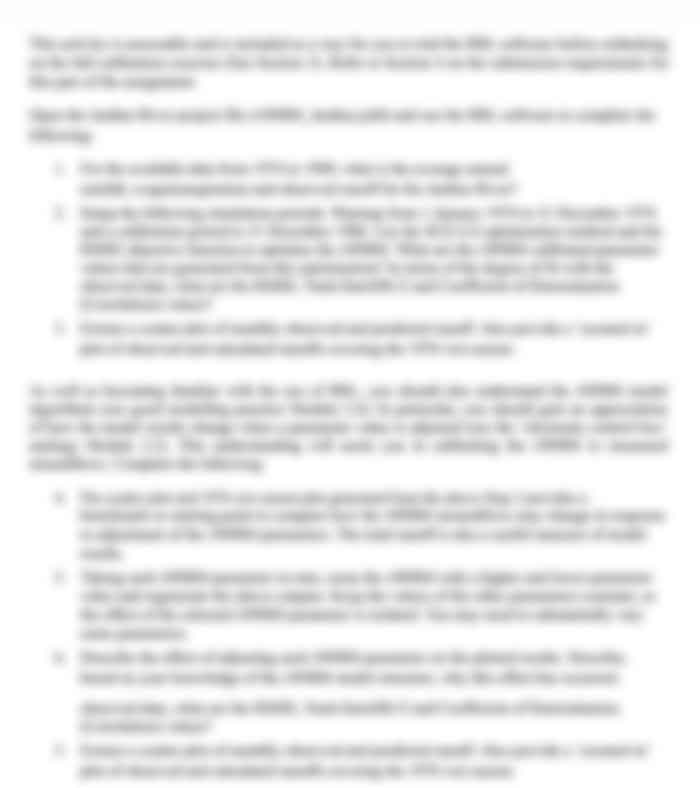Hospital-Acquired Infections (HAIs) & Anti-microbial Resistance
Abstract:
Hospital-Acquired Infections (HAIs) are one of the complex issues in healthcare organizations, and Methicillin-resistant Staphylococcus aureus (MRSA) is one of the examples of antibiotic-resistant organisms. Normal physiology can be defined as the physiological processes in the bodys innate and adaptive immune system that would ordinarily contain bacterial infections. However, in hospital structures, MRSA succeeds since it is resistant to methicillin & other beta-lactam antibiotics, widely used for the treatment of S. aureus infections. The outline of how MRSA causes disease includes the bacterias production of enzymes that break down antibiotics known as beta-lactamase, along with the organisms ability to avoid being recognized and attacked by the immune system, often resulting in chronic and recurrent and often severe disease. Vancomycin is equally important in the treatment of MRSA infection since it has not been displaced by newer antibiotics. It achieves this by preventing the formation of cell wall, a structure that is very vital for any bacterial organism. The essay also describes how vancomycin works, how it should be administered and the side effect of this drug including nephrotoxicity and ototoxicity. MRSA infections management is an important segment that involves the knowledge of the disease processes as well as the utilization of antibiotics such as vancomycin. In conclusion, management of MRSA infections norms an imperative segment that entails understanding of the disease processes as well as the application of appropriate antibiotics and especially the vancomycin. Meeting these challenges is important in enhancing results that relate to HAIs, and reducing their effect.
Introduction:
The human body has numerous structures and physiological processes to accomplish the regulation of the internal body environment and resistance to diseases. The skin and mucous membranes act as the first line of defence to minimizing the infiltration of the body by disease causing agents (Carter et al., 2018). These barriers are backed by the bodys non-specific or innate immunity, comprising of cells that locate and kill invading pathogens; these include macrophages, neutrophils, and natural killer cells (Carter et al., 2018). Also, both B cells and T cells in the adaptive immune system give a more targeted and long-standing defense against pathogens and the pathogens are remembered through antibodies. This homeostasis is usually disturbed in HAIs and MRSA, thus resulting in lots of health complications (Turner et al., 2019).
MRSA is a type of bacteria that cannot easily be treated because it is resistant to many commonly used antibiotics. The bacterium from which MRSA evolved, Staphylococcus aureus, is usually found on the skin and in the nasal passages of people without sickening them (Turner et al., 2019). However, if the skin barrier has been broken or the bodys immune system is weakened, S. aureus is capable of causing infections that range from superficial skin infections to life threatening conditions like pneumonia, bacteraemia and post-surgical site infections (Carter et al., 2018). HAIs including ones due to MRSA occur because these normal physiological barriers are breached and this can happen in hospitalised patients who have inserted catheters or use a ventilator or who are undergoing a surgery.
Pathophysiology of MRSA in Hospital-Acquired Infections
MRSA is a prominent agent of HAIs because of its resistance to several classes of antibiotics and the virulence of its infections. In approaching the analysis of pathophysiology of MRSA, these ranges from the bacterial factors of resistance to host reactions to the infection (Boucher, Corey, & Kaye, 2019).
MRSA developed from Staphylococcus aureus, but through the causes of the mecA gene, found in the staphylococcal cassette chromosome mec. The mecA gene produces Penicillin Binding Protein 2a which has poor affinity towards the beta-lactam group of antibiotics including methicillin (Gordon & Lowy, 2018). MRSA can be present as a colonizer of the skin & mucosal surfaces of healthy persons and this is called colonization. Nevertheless, in the hospital environment, patients are considerably more susceptible to infections because of their pre-existing conditions or underlying illnesses, recent surgical operations, and the potentially compromised status of their immune systems, crucial manipulations such as catheterisation or ventilation (Liu et al., 2020).
Once MRSA has crossed these barriers it using several virulence factors to set up an infection. Such include adhesins which enable the bacteria to stick on tissues of the host, which leads to tissue invasion. MRSA has the ability to create biofilm especially on medical apparatus that helps the bacteria to escape over immunological detection and drug dissolution. Neutrophils are usually the first responders, try to engulf and eliminate the pathogens (Gordon & Lowy, 2018). However, it has also developed ways of escaping the immune system response; for example, through the exhibition of leucocidins that can readily kill neutrophils and other cells making up the immune system (Turner et al., 2019). Pro-inflammatory cytokines and chemokines are produced during bacterial or viral invasion that in turn draws more immune cells to the site of infection which may cause localized inflammation, formation of abscesses and tissue necrosis. Rarely, MRSA can lead to systemic infection, for example sepsis- an inflammation of the entire body, including organs, and potentially fatal (Turner et al., 2019).
Pharmacology of MRSA Treatment
Pharmacological measures used in handling MRSA include the fact that the organism has been resistant to certain antibiotics medical treatment of MRSA. Vancomycin is one of the most crucial ones used in the treatment of infections (Centers for Disease Control and Prevention, 2019).
Drug Class & Naming: Vancomycin falls under the glycopeptide antibiotics class. It is a very important antibiotic that is used in cases involving the MRSA infection (Srgel & H., 2023).
Generic Name: Vancomycin
Proprietary Name: Vancocin
Chemical Formula: C66H75Cl2N9O24
Mechanism of Action (Pharmacodynamics) and Pharmacokinetics: Vancomycin affects cell wall synthesis as a mechanism of its antibacterial activity. It strongly attaches to the D-Ala-D-Ala terminal of the newly synthesized peptidoglycan chains, and inhibit the cross-linking of the peptidoglycan chains which is very crucial for bacterial cell wall stability & solidity (Rybak, Le, & S., 2022). Due to this inhibition, cell wall lysis and bacterial cell death occurs and its effective against Gram-positive organisms and MRSA included (Srgel & H., 2023).
Pharmacokinetics:
- Absorption: Poorly absorbed orally; used intravenously for systemic infections.
- Distribution: Widely distributed in body tissues and fluids, including the kidneys, lungs, and heart.
- Metabolism: Minimal metabolism.
- Excretion: Primarily excreted unchanged by the kidneys; renal function significantly affects dosing (Vardakas, Palladinos, & D., 2022).
Routes of Administration:
- Intravenous (IV): With regard to the infections affecting the body such as sepsis, endocarditis, pneumonia among others.
- Oral: For infections confined to the gastrointestinal tract and only C. difficile colitis is one of the diseases affected, because it is not absorbed from the digestive system circulation.
- Intrathecal/Intraventricular: For central nervous system infection (Vardakas, Palladinos, & D., 2022).
Indications, Contraindications, Precautions, and Side Effects:
- Indications: Treatment of serious or severe infections caused by MRSA and other Gram-positive bacteria, including bloodstream infections, endocarditis, and osteomyelitis.
- Contraindications: Known hypersensitivity to vancomycin.
- Precautions: Renal impairment (dose adjustment required), hearing impairment, concurrent use of nephrotoxic or ototoxic agents.
- ?Side Effects: Nephrotoxicity, ototoxicity, "red man syndrome" (a histamine release reaction), thrombophlebitis at the injection site (Vardakas, Palladinos, & D., 2022).
Drug Interactions: It should not be administered along with dialysis, or together with other medications with nephrotoxic or ototoxic effect such as aminoglycoside antibiotics, amphotericin B, or furosemide because they amplify the risks of kidney and/or ear toxicity (Rybak et al., 2020).
Relevant Considerations:
- Age and Renal Function: Patients taking this medication must be elderly or have renal disease and should be dosed and monitored carefully not to develop toxicity.
- Comorbidities and Polypharmacy: The patients having multiple diseases and on multiple medicaments require special evaluation to avoid additive side effects of the interacting drugs (Liu et al., 2020).
Relevance to Practice
HAIs and antimicrobial resistance (AMR) pose significant challenges in clinical practice, particularly concerning MRSA. MRSA is a formidable pathogen in healthcare settings due to its resistance to multiple antibiotics, complicating treatment regimens and patient outcomes (World Health Organization, 2023).
Knowledge of HAIs and MRSA is critical for implementing stringent infection control measures, such as proper hand hygiene, sterilization procedures, and the use of personal protective equipment (Liu et al., 2020). These practices are essential in preventing the spread of MRSA within healthcare facilities. Awareness of AMR informs the selection of appropriate antimicrobial therapy, promoting the use of narrow-spectrum antibiotics, when possible, to reduce resistance development (Nelson, Kallen, & Reddy, 2023).
In nursing, the application of this knowledge enhances patient-centred care by enabling nurses to identify at-risk patients, promptly isolate those infected or colonized with MRSA, and administer effective treatments (Rybak et al., 2020). For instance, understanding the pharmacodynamics and pharmacokinetics of vancomycin, a commonly used antibiotic for MRSA, allows nurses to monitor therapeutic levels and adjust doses to optimize efficacy and minimize toxicity. By integrating this knowledge into clinical practice, healthcare professionals can improve patient outcomes, reduce the incidence of HAIs, and contribute to the global effort against antimicrobial resistance (Liu et al., 2020).
Conclusion:
MRSA is a vulnerable bacterium in health-care structures because it derives its resistance to an extensive range of antibiotics hence complicating treatment procedures and patients prognosis. It is essential that the nursing staff has complete knowledge about the pharmacodynamics of MRSA and the patterns of resistance that the pathogen can pose for it can become a serious threat to the lives of many patients. It is essential to know information about HAIs and MRSA to incorporate specific infection prevention and control steps such as hand washing, and sterilization, besides the use of protective clothing. All these practices are important in the containment of the spread of MRSA in healthcare facilities. Knowledge about AMR influences the choice of the suitable antimicrobial therapy that includes preference of the narrow spectrum antibiotics as much as possible to decrease resistance.
In nursing, this knowledge helps in elaborating the acts of patient-centred care by allowing nurses to recognize those patients, who would be most vulnerable to the aforementioned bacteria, isolating those who are infected or contaminated with MRSA, or providing adequate treatments for the disease. For example, pharmacodynamics and pharmacokinetics of vancomycin which is a widely applied antibiotic for MRSA treatment helps nurses to control the therapeutic levels and adjust the doses in order to enhance the result and reduce adverse effects. In addition, knowledge on the facts about MRSA and AMR assists nurses in advocating for antibiotic stewardship interventions that are of significance in the fight against the resistance. The incorporation of this knowledge into practice will help the healthcare workers and in turn the patients to have better health profiles thus resulting in less HAIs cases, thereby concurring with the global fight against antimicrobial resistance.
Are you struggling to keep up with the demands of your academic journey? Don't worry, we've got your back!
Exam Question Bank is your trusted partner in achieving academic excellence for all kind of technical and non-technical subjects. Our comprehensive range of academic services is designed to cater to students at every level. Whether you're a high school student, a college undergraduate, or pursuing advanced studies, we have the expertise and resources to support you.
To connect with expert and ask your query click here Exam Question Bank

